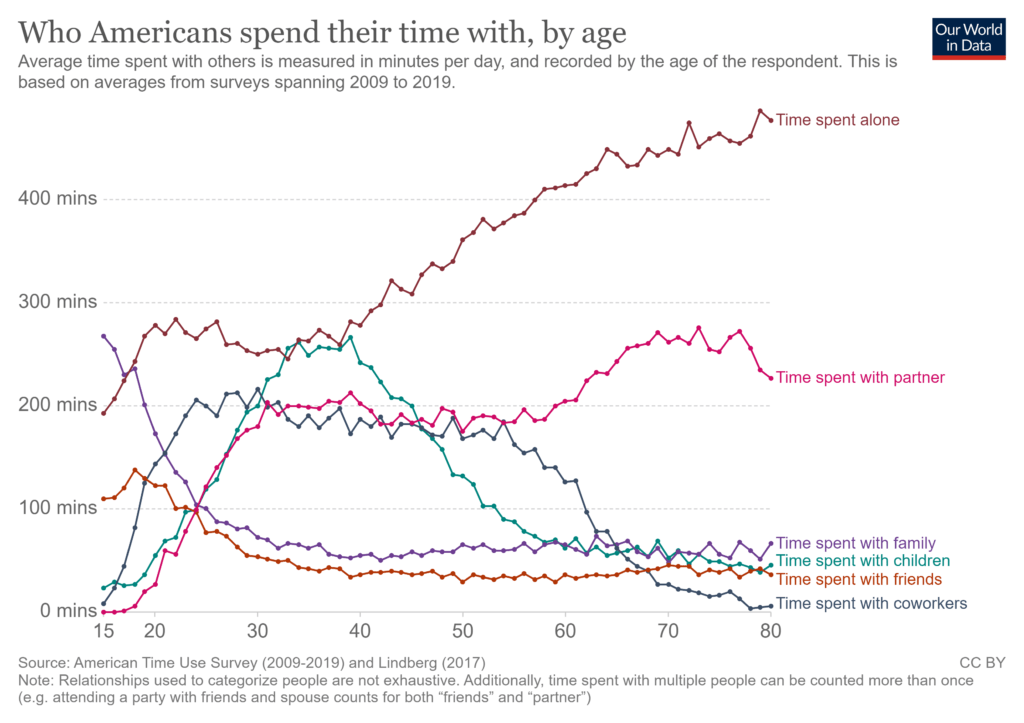One of the benefits of the pandemic is that we’ve spent a lot of time with our kids. It’s certainly been challenging and there have been many difficult times, but on the whole we’re thankful to have this “bonus” time with them. (yes, this is a bit of reflective silver lining thinking going on here!)
As we age, the data shows that we spend an increasingly greater amount of time by ourselves. We spend less of it with our family, which reminds me of this great Wait But Why post titled The Tail End, more of it with a partner, but increasingly more of it with just ourselves:

Who do we spend time with across our lifetime? [Our World in Data] – “Who we spend time with evolves across our lifetimes. In adolescence we spend the most time with our parents, siblings, and friends; as we enter adulthood we spend more time with our co-workers, partners, and children; and in our later years we spend an increasing amount of time alone. But this doesn’t necessarily mean we are lonely; rather, it helps reveal the complex nature of social connections and their impact on our well-being.”
A Brief History of Consumer Culture [The MIT Press Reader] – “Over the course of the 20th century, capitalism preserved its momentum by molding the ordinary person into a consumer with an unquenchable thirst for more stuff.” Eye opening.
A long time ago, I used to be a software engineer. One of the things you learn in computer science is that computers can’t be 100% random when they generate numbers. You can simulate something that closely approximates randomness to a human being but it’s never truly random and that’s bad for security.
What computers use is a “seed” to generate these numbers and the key is using a seed that is random. In less rigorous environments, programmers may use a digit in the time or something similar. But even that is not “safe” enough — so this company is using something different – lava lamps:
So cool!
